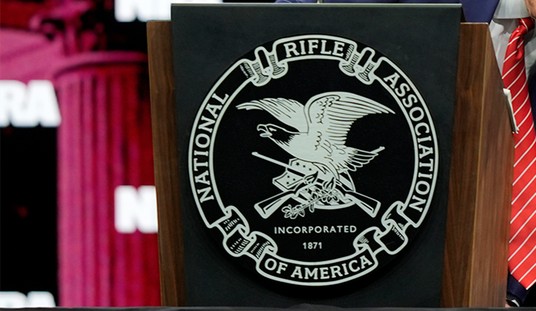It was a week ago Friday that the Department of Justice and the Bureau of Alcohol, Tobacco, Firearms, and Explosives announced a new proposed rule to broadly redefine “frames” and “receivers” under the Gun Control Act of 1968, a move that some critics say goes too far and amounts to the agency rewriting the law itself, which is up to Congress, not the executive branch.
While the ATF issued a press release for the proposed rule last Friday, the rulemaking process doesn’t formally begin until the proposal is published in the Federal Register, which triggers a period of public comment. And oddly, the Federal Register has yet to publish Proposed Rule 2021R-05, which means that the proposal could still be changed before it becomes official.
Now, it’s not unusual for a couple of days to pass between a public announcement of a proposed rule change and its publication in the Federal Register, but a delay of at least a week is somewhat out of the ordinary. While none of the folks in the firearms industry that I spoke to about this wanted to offer their theories on the record, a few suggested that the Department of Justice and the ATF floated out the proposal last Friday as a trial balloon, but held off on formally publishing the proposal and starting the clock on the public comment period until they could gauge the reaction.
Well, they’ve had a week now, and as J.D. Tucille writes at Reason, the verdict from industry insiders is that the proposed rule is a mess.
An industry insider told me that the ATF obviously is trying to give itself latitude to determine whatever it wants about what constitutes a firearm without objective standards. This way it can evoke any interpretation that seems politically expedient at the moment.
But there are limits even to vague language. The ATF allows that an object must be “clearly identifiable as an unfinished component part of a weapon” to be subject to regulation and that “frame or receiver molds that can accept metal or polymer, unformed blocks of metal, and other articles only in a primordial state would not—without more—be considered a ‘partially complete’ frame or receiver.” At some point, by necessity, a component stops short of being a firearm part and escapes regulation.
That’s going to be interesting, since the current market for firearms kits and 80 percent receivers evolved in response to earlier ATF rules. Demand for the kits largely exists among people who oppose legal restrictions. The proposed revisions are part of an ongoing game of whack-a-mole between government officials and gun enthusiasts. What vendors offer in the future will be a response to the outer boundaries of these rules, not just the prohibitionist desires of the current administration or of ATF agents. The industry insider told me that the commercial market for DIY firearms components will ultimately be determined more by consumer demand than by politicians’ wishes. If buyers continue to seek products that help them make guns, sellers will find a way to keep them happy.
I encourage you to read Tucille’s whole piece, but the big takeaway is that even with these sweeping definitions of “frame” and “receiver” and “readily convertible” items, the proposed rule won’t stop people from making their own guns. 3D-printed firearms are becoming more popular, and any attempt to crack down on 80% frames and receivers will only cause even DIY gunmakers to shell out the few hundred bucks for a 3D printer of their own.
I have no idea why the ATF’s proposed rule hasn’t been officially published yet, but I suspect that when it finally appears in the Federal Register it may look slightly different than the document released back on May 7th. I also suspect that any changes that are made aren’t going to be nearly enough to satisfy gun owners and the Second Amendment organizations that are already weighing legal action if the rule is implemented.
In the meantime, I’m going to continue to watch for the publication of the proposed rule and will let you know once the 90-day window for public comment period is officially open, because it’s critically important that gun owners weigh in once we have the chance.








Join the conversation as a VIP Member